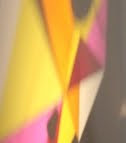when dolphins sound like horns...
pictured above, and in detail, is the first page of michael ondaatje's 1975 novel "coming through slaughter". the images and text were originally printed, i believe in this exact form, in joan macintyre's 1974 book "mind in the waters", and i recently discovered an image of the page via one of my favorite blogs: vertigo: collecting and reading w.g. sebald (and you can read terry's post on ondaatje's first novel here)... so clearly, these little dolphin sounds have taken quite a journey, before they arrived here...
here is the text, for those of you without a magnifying glass...
"three sonographs - pictures of dolphin sounds made by a machine that is more sensitive than the human ear. the top left sonograph shows a "squawk." squawks are common emotional expressions that have many frequencies of pitches, which are vocalized simultaneously. the top right sonograph is a whistle. note that hte number of frequencies is small and this gives a "pure" sound - not a squawk. whistles are like personal signatures for dolphins and identity each dolphin as well as its location. the middle sonograph shows a dolphin making two kinds of signals simultaneously. the vertical stripes are echolocation clicks (sharp, multi-frequency sounds) and the dark, mountain-like humps are the signature whistles. no one knows how a dolphin makes both whistles and echolocation clicks simultaneously."
this notion of re-presenting this text and image as the first page of a novel, was enough for me to seek out the book and read it.
coming through slaughter is a novel composed of small dreamlike episodes, written in poetic and narrative fragments, approaching the life of jazz great buddy bolden. what is super interesting is that, at least at the time the book was written (i am no jazz historian), there were no known existing recordings of beldon's playing - and yet ondaatje was clearly not afraid to approach his sound. certainly the author has gleaned a lot of beldon's life and musical history from various sources, but the book's power is strongest when ojdaatje suggests bolden's sound by association, as he does in his beginning of the book with images of a dolphin's squawks, whistles, and "echolocation" clicks. echolocation seems to be the operative term for so much of the book, as beldon seems to wander in and out of time, life, and music - feeling sometimes a gravitational presence and sometimes a faded drifting echo of that presence.
having spent the last 7 years working on a series of paintings, drawings, film, sound, and sculpture based on the score of a piece of music i've never heard, i humbly felt a bit of kinship towards the author of a book written about about a man and his sound that was never heard or known in person, by the author.
the book's form, mostly short pieces of prose, interspersed with a few bits of poetry and notations, as well as some of its seedier/steamier content, reminded me a lot of gerhard roth's winterreise, which was published 4 years later. roth's 1978 novel was only tangentially connected to music, in that its title was based on a cycle of poems by wilhelm muller that was famously set for voice and piano by franz schubert.
like roth's book, coming through slaughter contains a number of beautiful passages, none more compact and evocative than this, which appears on page 64:the mystic privacy one can be so proud of has no alphabet of noise or meaning to the people outside.
Labels: alphabet of noise, buddy beldon, dolphin sounds, michael ondaatje, mystic privacy, sonographs

1 Comments:
GT: Seeing it over and over again, it starts to wear down. I think with certain things, like all the geometric shapes in work—sacred geometry’s showing up a lot—I think it goes back to people wanting to believe in something. There’s this big trend, globally, of reconnecting with Mother Earth and trying to take care of her, and I think we’re trying to go back to the knowledge of the ancients and the wisdom of other cultures. We’re reaching out to communities that are involved with their relationship with the earth, because we’ve created such a disconnect with the earth; this is our way of trying to get back to it.
VG: But all this imagery feels like such a superficial way to do it.
Post a Comment
<< Home